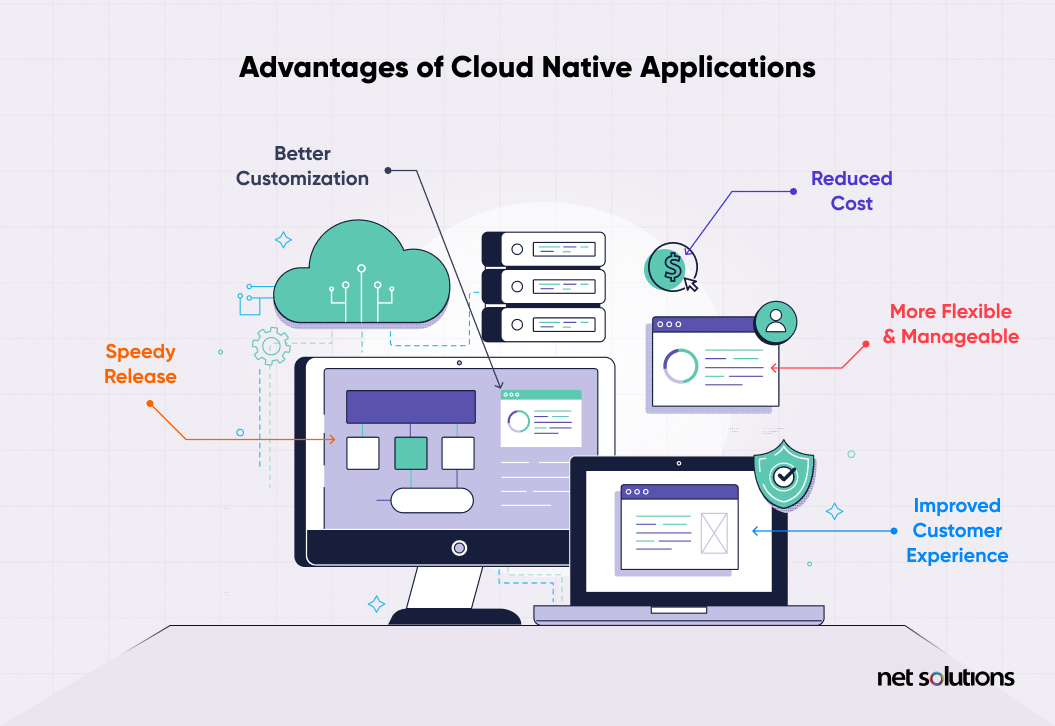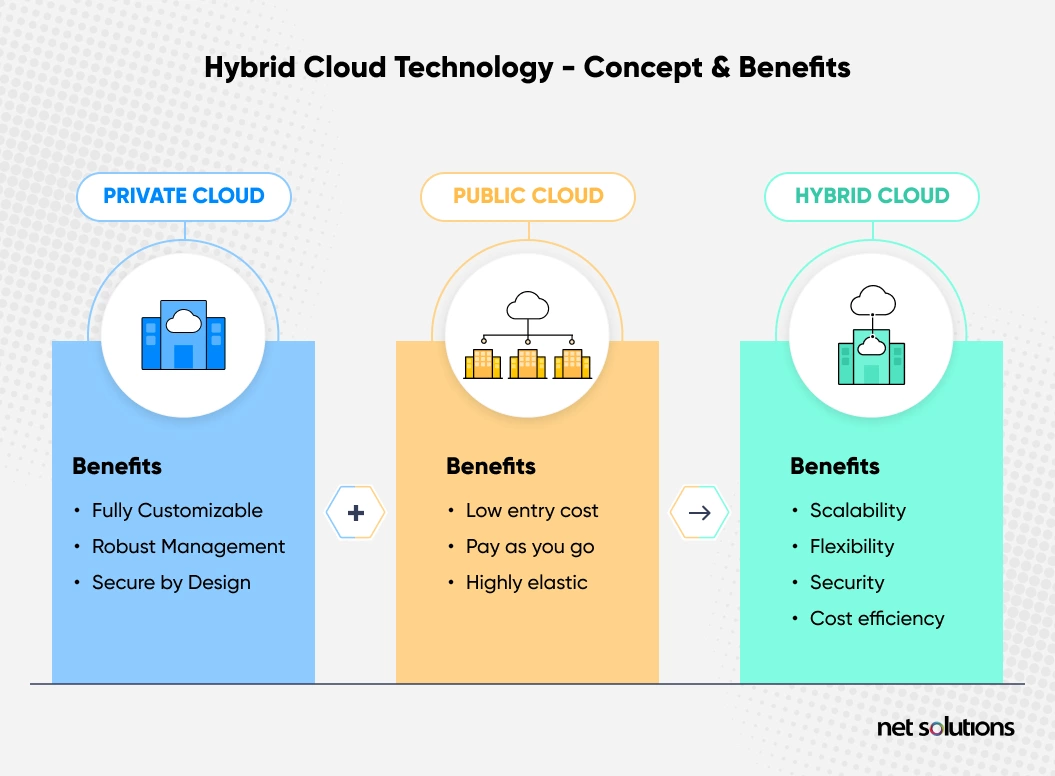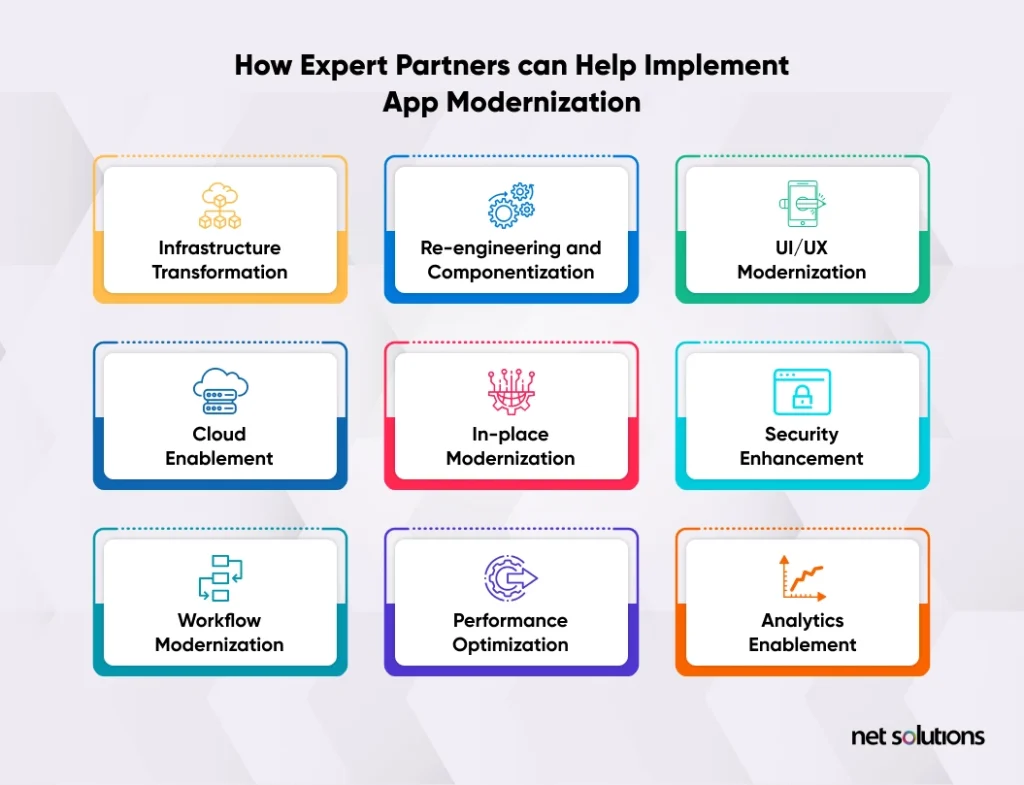Application modernization constantly evolves, with IT thought leaders regularly introducing new technology and more effective practices. The following 13 app modernization trends are worth studying to determine whether adding them to your app modernization strategy makes sense. You don’t need to add them to your modernization roadmap, but your budget and IT resources will factor in deciding which technologies to adopt. That said, anyone engaged in app modernization should know all the technology available today.
Application modernization is essential to run a successful digital business. Companies running on legacy systems, or systems with legacy components, will need help to adapt to customer needs and operate cost-effectively. Many legacy apps struggle to work correctly with other apps. App modernization is a continuous process, and companies must stay on top of the latest app modernization trends.
When developing your application modernization strategy, it’s essential to understand what leading companies are doing to ensure they work with a powerful, flexible, scalable infrastructure. This includes exploring and potentially adopting some of the most cutting-edge app modernization trends and technologies available today.
What are application modernization trends?
Today’s top app modernization trends revolve around common themes: automation, Artificial Intelligence, and containerization. All these trends help make IT systems easier to scale, more cost-effective, and easier to operate.
In this blog post, we’ll explore the top 13 app modernization trends we’ve observed based on our experience as an IT development firm. We’ve seen first-hand which approaches are helping organizations succeed and outlined those principles and practices below.
13 Top application modernization trends
When developing an application modernization roadmap and strategy, surveying the landscape and knowing what other businesses are doing to modernize their IT infrastructure is essential. You don’t need to employ all these trends in your app modernization efforts, but you should at least be aware of them so you can use the ones that make sense for your organization.
-
Low-code and no-code development
Low-code and no-code development allow people with little-to-no programming skills to build basic software applications, and its popularity is booming. According to a recently published Gartner Study, 70% of apps will be created through low-code or no-code development by 2025.
Low-code and no-code development is key to app modernization trends because it offers the following benefits.
- Faster innovation: Low-code and no-code development reduces the time it takes to take a new application live because key stakeholders can create the exact application they want, then have developers refine and improve them.
- Developer shortage: There is currently a significant developer shortage, and the new pipeline of developers won’t be able to pick up the slack for years. No-code and low-code software development can streamline some simple programming tasks.
- Augmenting professional development: No-code and low-code are not just for lay people. Experienced developers can use it to support their efforts when creating basic applications or the simplest elements of more complex applications. This can speed up the process, freeing up development resources for more complicated tasks.
No-code and low-code development do have their limitations, of course. They don’t always produce the cleanest code, so it often makes sense to have professional software developers review the code it creates. However, this technology is a great time-saving device that can help your organization move faster and modernize quicker.
-
Cloud native development
Cloud-native apps are becoming the norm, and IDC predicts that 90% of all apps will be cloud-native by 2024. These apps, developed with microservices technology, enable companies to create flexible software development solutions they can regularly improve—which is essential for continuous application modernization.What are some of the advantages of cloud-native applications?
- New versions and updates reach the market faster
- Greater cost efficiency
- Increased flexibility
- Improved reliability
- Elevated customer experience and customer satisfaction

Remember that data on the public cloud is less secure than data stored on a private cloud or private servers. That’s one of the few downsides to the public cloud—vulnerability to security breaches—but there is a solution. The next trend on the list, hybrid cloud technology, works great for organizations that handle highly sensitive data.
-
Hybrid cloud technology
For businesses where security breaches could prove catastrophic, leaving officers financially and sometimes even criminally liable, the hybrid cloud offers an alternative that combines the best features of the public cloud with dedicated, privately-owned servers and private clouds.
Hybrid clouds use technologies like edge computing, where sensitive data can be processed locally. For example, some companies use AI to monitor elders in long-term care facilities and alert staff when the system detects a possible fall. To protect resident privacy, the company can employ edge computing to process the video on the device itself, rather than sending it across the cloud where bad actors could intercept it.
-
Progressive Web Applications
Progressive Web Applications (PWAs) can operate on any device (mobile or desktop) that can run an internet browser.
PWAs offer the following advantages.
- Quicker loading times
- Excellent performance
- Less data-intensive (all things being equal)
- Instant updates
- Widespread accessibility
-
Personalization and data tracking
Personalization, also known as the Internet of Behavior, is a key app modernization trend that allows companies to gather and process mountains of data and transform it into actionable insights about their users and business.
This can include sales insights tied to the company’s Client Relationship Management (CRM) software, data derived from patterns found within the company’s Enterprise Resource Planning (ERP) software, and many other sources. Companies can then use these insights to personalize and optimize the experience for internal and external customers.
-
Artificial Intelligence (AI) and Machine Learning (ML) based apps, data caching, and high-performance computing
A recent report from Konveyor claims that Artificial intelligence (AI), Machine Learning (ML), data caching, and high-performance computing is poised to grow 20% over the next two years, and these technologies are playing a pivotal role in app modernization.
AI and ML can anticipate customer needs and plan operational tasks that used to take countless hours and complex algorithms. For example, Adiona is a company that uses AI and ML to optimize delivery routes for third-party logistics companies. These types of technologies go hand in hand with high-performance computing and data caching, which are necessary to quickly process large volumes of data.
-
Legacy Infrastructure Replatforming, Refactoring, and Repurchasing

- Replatforming: Replatforming uses cloud migration techniques to upgrade all key components without altering the core code or the system’s fundamental architecture.
- Refactoring: Refactoring involves containerizing system applications and their workloads and migrating them to a serverless architecture while retaining the core code.
- Repurchase: Repurchasing is a fancy word for moving from one-time purchases to apps with recurring licenses (i.e., the SaaS model).
-
Containerization (with an emphasis on Kubernetes)
Kubernetes is an open-source system for containerizing applications, making them more flexible, easier to scale, and more efficient to deploy. Kubernetes has gained tremendous popularity, with leaders like Amazon Web Services (AWS) offering Kubernetes-based solutions allowing their clients to manage container applications at scale. -
Taking a DevOps approach
DevOps is a model for managing IT initiatives, and it’s well-suited to app modernization because it encourages cross-functional collaboration between IT departments and the rest of the company. By working closely with key stakeholders in other departments, developers engaged in app modernization can be more confident they’re serving the company’s more extensive business needs.DevOps heavily focuses on automation, which includes:
- Continuous Integration & Continuous Delivery (CI/CD) processes
- Microservices
- Smooth information exchange

It involves identifying and addressing gaps in communication and bottlenecks in productivity. This sets the stage for faster deployments, higher quality, and greater flexibility.
-
Composable architecture
Composability is all about redesigning your system’s architecture to fuse various components based on user requirements. Companies apply it to the entire tech stack, integrating it with all established business processes.Opting for a composable architecture offers:
- Flexibility and agility
- High-speed deployment
- Greater re-use capabilities and fewer duplications of data

-
Micro front-end modernization
Micro front-end modernization involves changing individual components and technologies to speed up modernization. That means reusing application elements from other modernization projects with similar features and requirements. It saves time and resources because software teams aren’t required to build everything from the ground up. -
Hardware infrastructure modernization
Hardware infrastructure modernization means saying goodbye to legacy systems run on old, onsite hardware. These old systems are often unreliable, difficult and costly to scale, slow, unstable, and less secure. A modern cloud-based or hybrid infrastructure offers the following benefits.- Better performance: Modern infrastructure will use state-of-the-art processors with expanded memory and greater storage capacity—often at a lower overall cost.
- Scalability: Cloud-based infrastructure is much easier to scale, especially with pay-as-you-go products now common in the marketplace (e.g., AWS products). It instantly expands to support high traffic during peak hours, and capacity adjusts as your business grows.
- Speed of delivery: Modern hardware infrastructure allows teams to work in parallel and take products to market much faster than old, on-site legacy systems.
- Stability: Modernized hardware infrastructure is far more stable than legacy systems. It uses technology like CI/CD and automated monitoring to spot issues immediately.
- Security: A fully modernized infrastructure with modernized applications is far more secure than legacy systems. For additional security, see the section of this blog post where we cover hybrid cloud technology.
-
AI chatbots
A recent study in Forbes Magazine found that, while customers still prefer dealing with human beings, AI Chatbots increased online sales by 67% when companies used them. And considering how one well-designed AI Chatbot can replace hundreds of Customer Service representatives, the ROI on this app modernization trend is impressive. You’ll still need Customer Service reps for higher-level tasks, but AI Chatbots can take over many of the grunt work of basic Customer Service requests.
To be clear, we’re not talking about old-school, rule-based chatbots that respond to a set number of questions and essentially follow a script. AI Chatbots don’t scan the database for answers, either. Using the type of technology that makes ChatGPT possible, AI Chatbots engage in machine learning to serve customers better over time. You simply offer the initial data, and the AI chatbot learns from each encounter.
Need expert guidance with your application modernization efforts?
App modernization is immensely complicated, with many different moving parts. It requires careful strategy and the strategic application of resources, and many in-house software development teams simply don’t have experience performing large-scale app modernization overhauls.

If you’d like expert guidance in your app modernization efforts, Net Solutions provides comprehensive application modernization services to fit any strategy. We’re well-versed in the latest trends and can help you plot the course for a fully modernized IT system.
Our dedicated team of analysts, project managers, designers, developers, and QA specialists can help you achieve the modern IT infrastructure you need to succeed—so let’s set up a time to discuss your needs!
Frequently Asked Questions
1.What are 3 modernization focus areas?
Key to IT modernization efforts are application modernization, cloud migration, and hardware infrastructure modernization.
2. What are the fundamental approaches to application transformation?
Replatforming, rebuilding, refactoring, and encapsulating are four key approaches to application modernization, which you can read in our step-by-step blog post about building an application modernization roadmap.
3.What makes an application modern?
Modern applications employ the latest technology, and they’re typically cloud-native. This makes them scalable, flexible, secure, and capable of interacting with other modern applications.
4. Why should you pay attention to application modernization trends?
Unlike fashion and music trends, which change on a whim, the latest trends in app modernization employ today’s best thinking and technology. When hashing out an application modernization strategy, it’s essential to understand what your competition is doing. That way, you can make your business more competitive with cutting-edge technology.
SHARE THIS POST
Table of Contents
Related Resources
- A Framework-based Approach for App Assessment
- App Modernization Benefits To Boost Your ROI and Future-Proof Your Business
- 11 Top Application Modernization Best Practices in 2024
- Building a Winning Application Modernization Business Case
- Legacy Application Modernization Case Studies & Success Stories
- Solving the Toughest Application Modernization Challenges
- Cloud-Native Application Modernization: Benefits & Strategies
- 8 Core Application Modernization Drivers
- Enterprise Application Modernization: Complete Guide [2024]
- Lift and Shift: The Modernization Formula for Legacy Apps
- Navigating Application Migration and Modernization [Guide]
- Application Modernization and Optimization: A Complete Guide
- A Practical Approach to Application Rationalization: A CIO's Guide to Managing Complexity and Reducing Costs
- What is Replatforming? A Beginner's Guide to Upgrading Your Technology Stack
- 7 Steps to Build an Effective Application Modernization Roadmap
- Application Modernization Services Market: Comprehensive Analysis
- A Step by Step Guide to Application Modernization Strategy
- Explore the Best Application Modernization Tools and Resources



